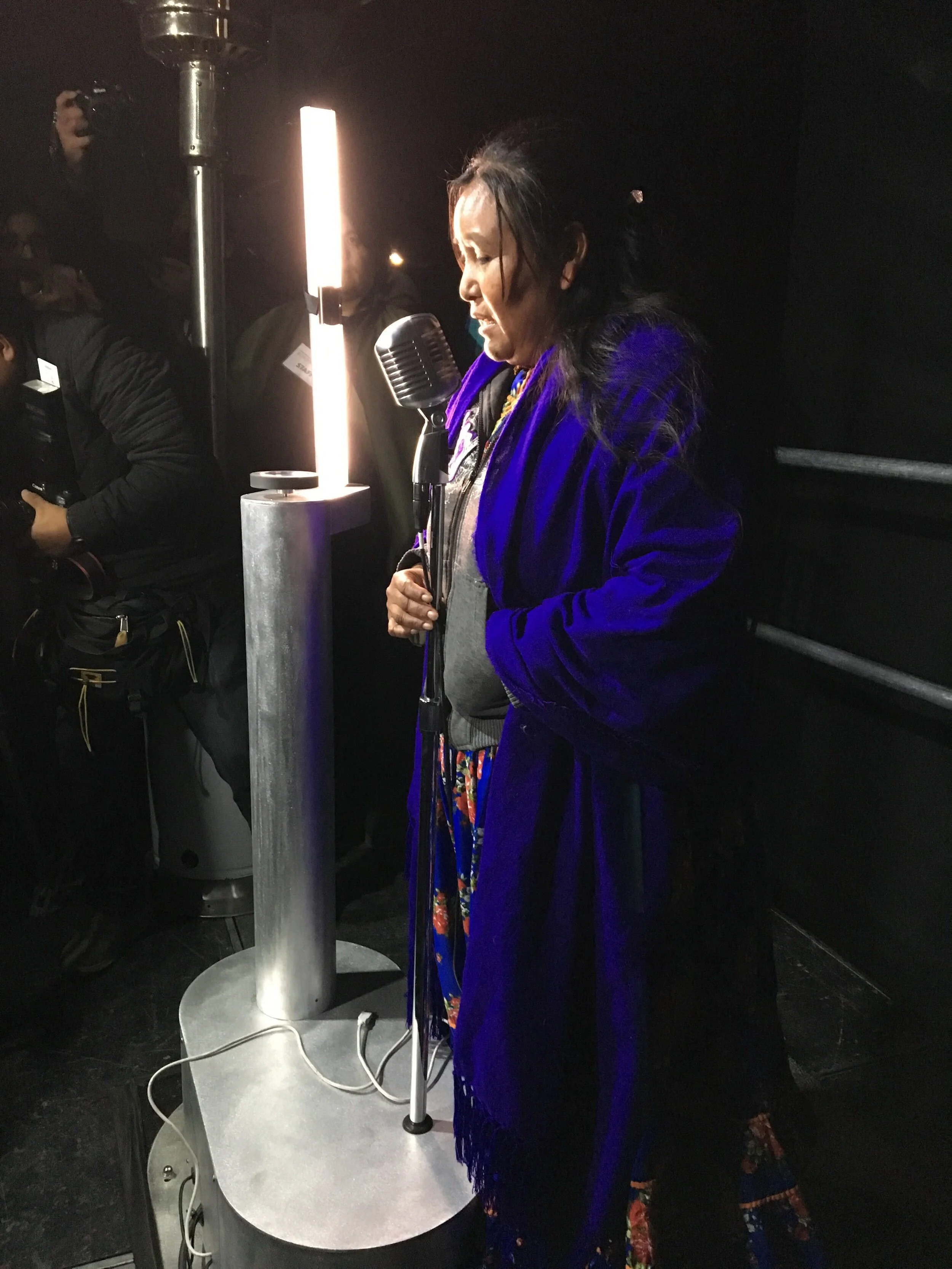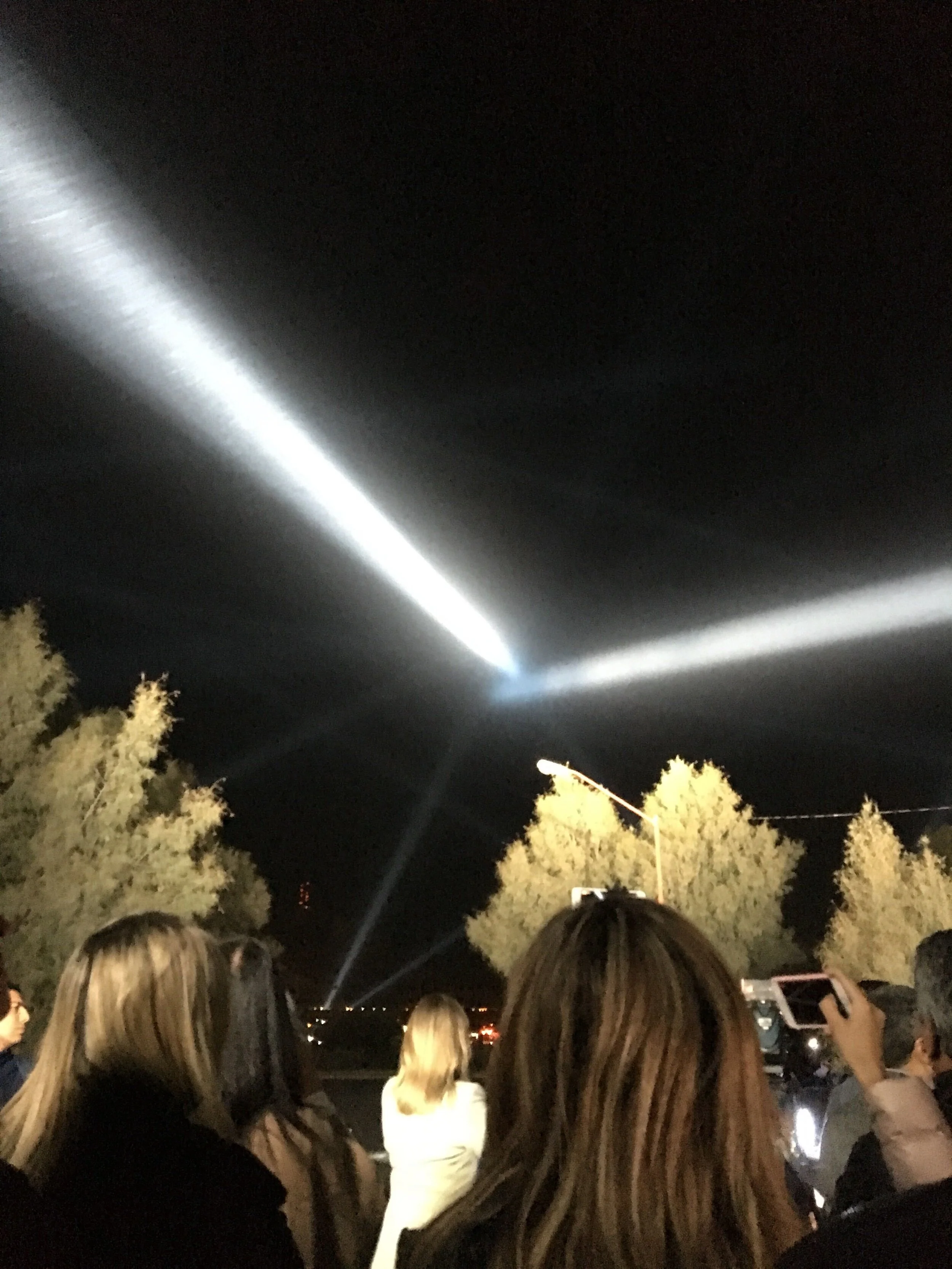“Border Tuner” was a multi-country temporary installation by Rafael Lozano-Hemmer. A transnational artwork that uses 18 robotic, high powered search lights and 6, interactive, radio-enabled sound stations to highlight the connections between El Paso, Texas and Ciudad Juarez, Mexico. Photos by Mariana Yanez. Nov. 2019
“Border Tuner was a large-scale, participatory art installation designed to interconnect the cities of El Paso, Texas, and Ciudad Juárez, Chihuahua. Powerful searchlights make “bridges of light” that open live sound channels for communication across the US-Mexico border. The piece creates a fluid canopy of light that can be modified by visitors to six interactive stations, three placed in El Paso and three in Juárez.
Each of the interactive Border Tuner stations featured a microphone, a speaker and a large wheel or dial. As a participant turns the dial, three nearby searchlights create an “arm” of light that follows the movement of the dial, automatically scanning the horizon. When two such “arms of light” meet in the sky and intersect, automatically a bidirectional channel of sound is opened between the people at the two remote stations allowing participants to speak and hear one another, either between stations across the border or between two stations in the same city.
Throughout twelve nights in November 2019, Border Tuner featured more than 250 local musicians, poets, activists, artists and students from both sides of the border in curated content that touched upon topics as diverse as youth culture, immigration, native voices and LGBTQ rights. More than 11,000 visitors participated in the installation between the two cities, spontaneously sharing songs, stories, reflections and laughter in both Spanish and English. Border Tuner was designed not to create new relations between the communities on both sides of the border, but to make visible the relationships that are already in place: magnifying existing connections, conversations and culture. The project provided a platform for a wide-range of local voices and an opportunity to draw international attention to the co-existence and interdependence between the two sister cities that together create the largest bi-national metropolitan area in the western hemisphere.”
3D Design and Visualization by Kitae Kim. Border Tuner was a massively complicated project and required approval from the governments of both El Paso and Juarez, the FAA, Border Patrol, and the Mexican Police. The VR simulation was instrumental in explaining to key stakeholders both the importance of the project, and its exact interactions, allowing all parties to easily coordinate around one source of truth that the artist could direct.
Border Tuner















